Rural Life Living Museum working weekend
Posted by Chris Graham on 17th March 2023
David Vaughan reports from a very enjoyable steam working weekend at the Rural Life Living Museum, in leafy Surrey.
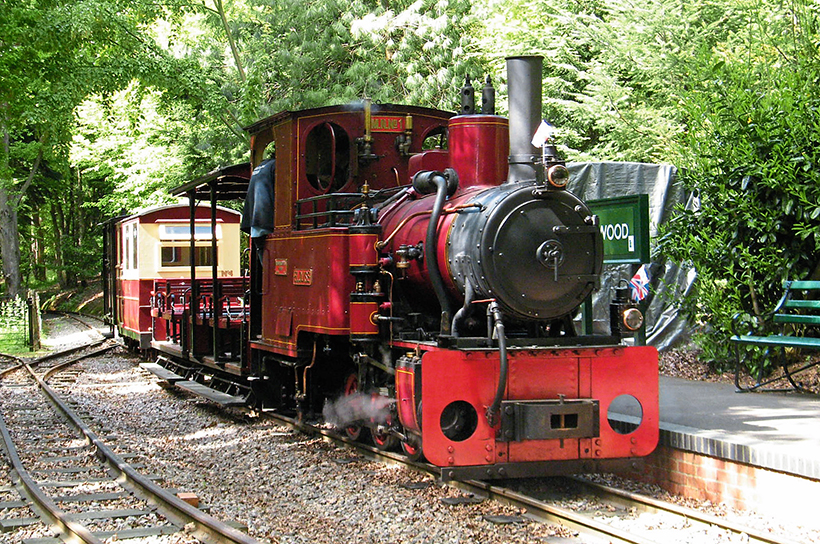
Rural Life Living Museum: Rolling along as it does, Eloise is an 0-6-0 well tank engine made by Orenstein & Koppel. (Pic: Richard Wade)
The museum is situated on a narrow secondary road off the A287, and strangely doesn’t seem to be sign-posted at all until you come to the entrance itself.
As early as the 1950s, local couple Henry and Madge Jackson realised that many old agricultural implements, such as wagons, and hand tools, used by earlier generations were being lost or destroyed. They became avid collectors of such items and, in 1973, after a suggestion by some friends opened what was then The Old Kiln Agricultural Museum. Some disused farm buildings in the part of the museum now known as Henry’s Yard were utilised for the museum, and their treasured collection soon began to grow, reflecting local life stories and many rural interests.
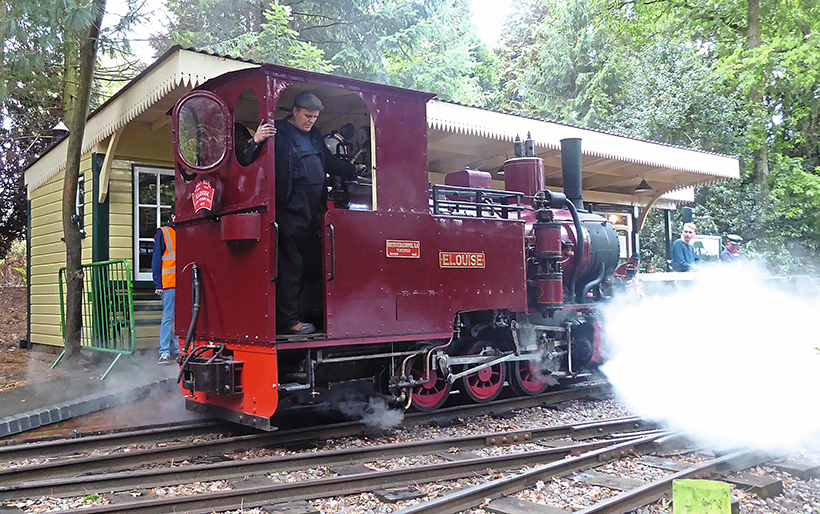
Eloise, with David Knoll on the footplate, heads off with another train. (Pic: David Vaughan)
Madge died in 2002 and Henry a few years later but today the museum, now a charitable trust, contains over 40,000 artefacts housed in an assortment of buildings, some of which, like the cricket pavilion, chapel and school room, have been moved from other local settings to the site.
No visit to the museum would be complete without a ride on the 2ft gauge Old Kiln Light Railway, under the management of David Knott and his team of volunteers. The line started in the 1970s as the 2ft Wey Valley Light Railway based around an out-of-use pumping station before eventually coming to the Rural Life Centre in 1982. The railway was running three steam engines, and at least one diesel, along a fairly short but quite scenic line that runs alongside the main museum site. To celebrate its 40th anniversary the railway was running an intensive service over the weekend utilising nearly all its rolling stock and two of its three steam engines.
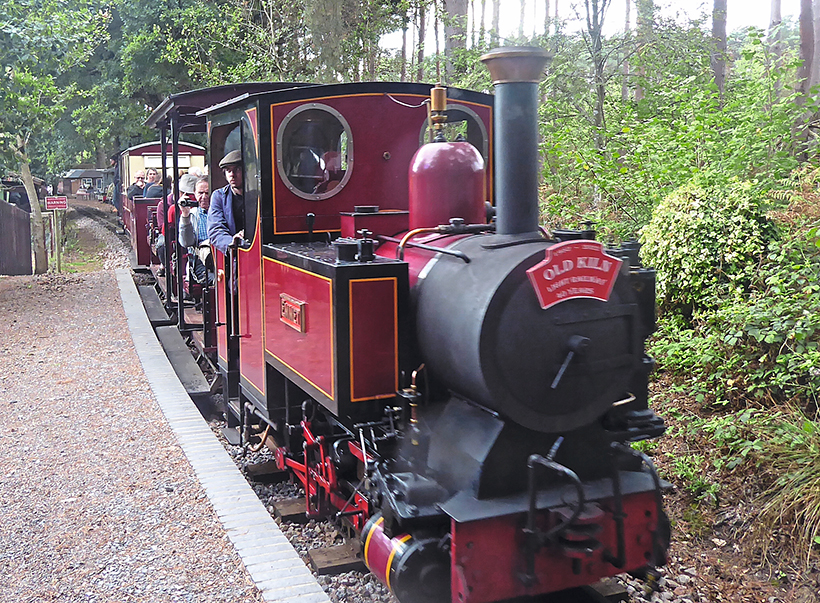
Seen at Oaklands Halt is Emmet, a popular engine on the Old Kiln Light Railway. (Pic: David Vaughan)
The railway was formed and is run by a small dedicated bunch of industrial railway enthusiasts. The 2ft line is approximately half a mile long with three stations and a yard with an engine shed and workshops. There is also a short siding to the timber yard in the main museum. The group is run separately to the Rural Life Museum and all its funding is through its fares and private donations.
The mainstay of the line is Eloise, an 0-6-0 well tank engine made by Orenstein & Koppel of Berlin in 1922 as No. 9998. She was supplied new to the Portuguese Forestry commission as their locomotive No. 1. She ended up on a plinth outside a cafe in Cascaise before coming to Britain in 1969. After several ownership changes she came to the Old Kiln Railway in 1986.
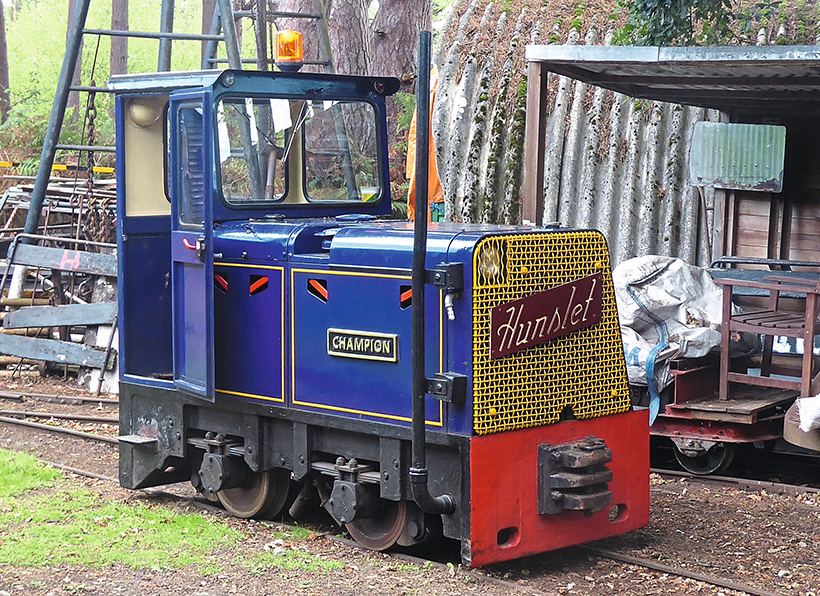
Hunslet diesel Champion in the works sidings. (Pic: David Vaughan)
Also here is a neat little 0-4-0 tank locomotive named Emmet that’s on loan from the Moors Valley Railway in Dorset. Interestingly its origins were also Orenstein & Koppel but as a diesel engine built in 1937 and it’s reported to have been used at the Peenemunde V2 rocket testing facility. It has undergone a complete rebuild to a steam locomotive retaining only the wheels and frames of the original engine. The boiler was built by Bennet Boilers Ltd for the Moors Valley Railway. It was double-headed on passenger trains by a Planet 20hp diesel locomotive No. FH2528; more on this in a moment.
A visitor to the railway was another Orenstein & Koppel product, Sao Domingos, another 0-6-0 well tank sold to Portugal through O&K’s Madrid agent in 1928 for work at a coal mine in northern Portugal. After arriving in Britain in 1972 it had a new boiler made by Jones Brothers of Preston in preparation for use on the West Lancs Light Railway. It never entered their service and later sold to the Bredgar & Wormshill Railway before being sold on to the Claude Jessett Trust at Hadlow Down in East Sussex.
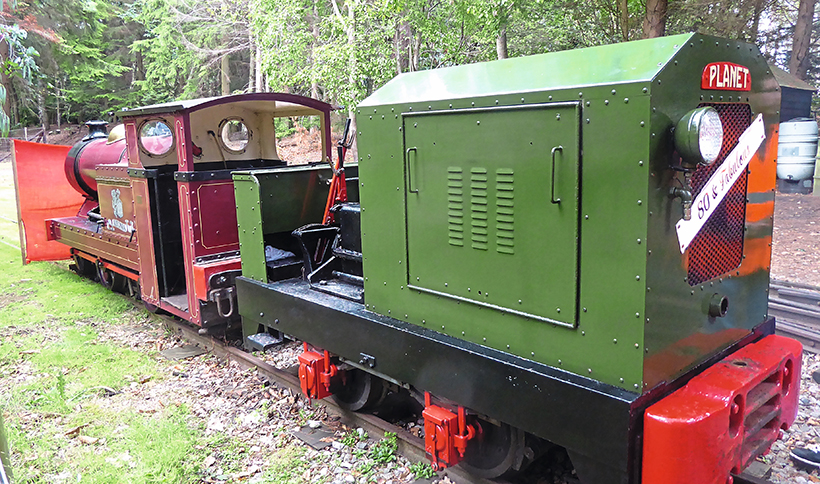
Parked in the siding is the Planet and the famous and very historic Baguley. (Pic: David Vaughan)
I was fortunate to be given a track-side pass for the railway which runs separately to the museum and the line is fenced off as such. The passengers embarked from the top station and were unable to exit from the bottom station, nearest the car park, without being able to exit through the museum’s main entrance and so only able to do a round trip having to walk back through the museum to the car park at the other end of the site. Rides on the railway are a reasonable £3. I have been told that discussions are taking place between the museum and the railway to facilitate joint ticketing arrangements.
Steam traction represents only part of the locomotive fleet here as industrial railways were the vanguard in using internal combustion engines as a source of power. As such the Old Kiln Railway is no exception with a small fleet of industrial petrol and diesel engines.
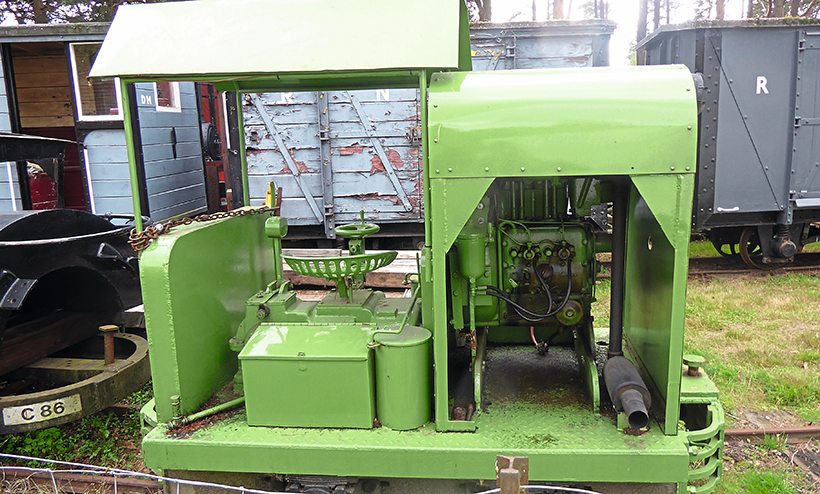
The air-cooled FL2 type Deutz-engined Belgian Moes. (Pic: David Vaughan)
On show at the weekend was Planet Type 39 No. FH2528 built by FC Hibberd at their Park Royal Corporation works. It is a 20hp locomotive ordered by the WD and supplied in December 1941. It’s believed to have worked at an MoD depot near Liphook, Hampshire before being sold to Streeters, a civil engineering contractor at Godalming. It then went to the Wey Valley Railway and, following its closure, was moved to the OKLR in 1982. It is one of approximately 10 survivors of its class and believed to be the only survivor with its original National 2D engine.
Hunslet is a name well known to steam enthusiasts with its factory at Leeds. Alongside its prolific output of industrial type steam locomotives it produced many internal combustion types, and indeed still does. One of three diesel-hydraulic locomotives purchased from the MoD Lydd (Kent) ranges in 2007 is AD38 type No HE7012 Champion. The engines were used to carry personnel and equipment on the extensive railway system within the ranges on the Kent marshes.
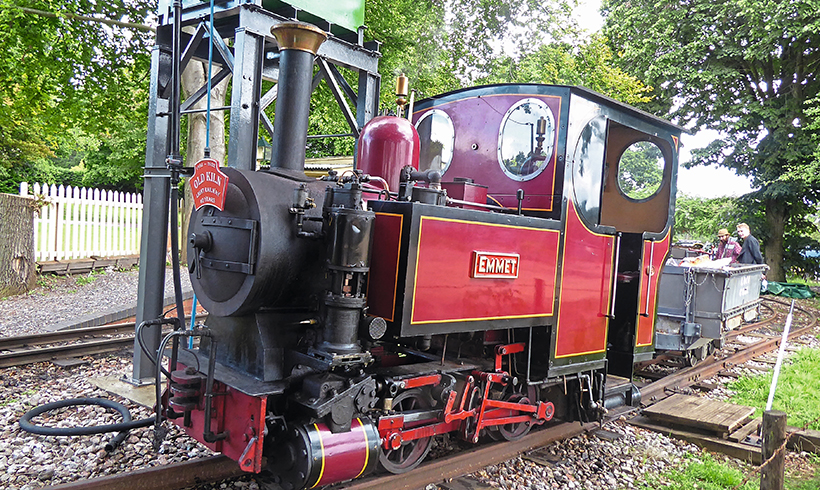
The 0-4-0 tank engine Emmet started life as a diesel locomotive. (Pic: David Vaughan)
An engine type unfamiliar to me is a Moes-type BL with a Deutz engine. Believed to have been built in 1955, it originally worked in a brickworks at Rumpst in Belgium and has recently been returned to the railway after extensive restoration work by the team at Statfold Barn.
Another unusual engine is No. 1769 Altonia. This pioneering design of locomotive dates back to WW1 when Baguley produced large numbers of petrol-powered engines for industrial and military use. They had a larger horizontal cooling tank above the engine and transmission which gave them the appearance of having a boiler. It was an easy step to add a dummy chimney to produce the superficial appearance of a steam locomotive.
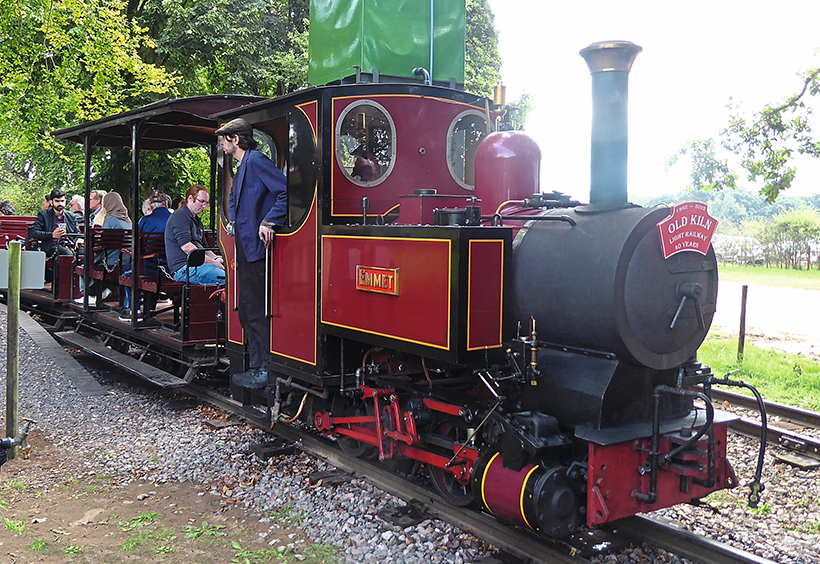
Emmet is on loan from the Moors Valley Railway and is named after that railway’s cat! (Pic: David Vaughan)
Baguley capitalised on this and, in 1928 Lilleshall Abbey Woodland Railway (near Telford) opted for a petrol loco of steam outline appearance to run on their new 2ft gauge line. No. 1769 was a despatched in May 1929 as a follow up to a less powerful version, and had a 20-25hp four-cylinder engine and ended up at Alton Towers, Staffordshire. Its original engine wore out and was replaced by a Perkins 27hp diesel.
It later went to the Rev Teddy Boston’s Cadeby Rectory line. After the line closed and was taken up it was sold to a private buyer in Surrey from where it found its way to the Old Kiln railway in 2012 and can often be seen pulling two of its original Baguley coaches.
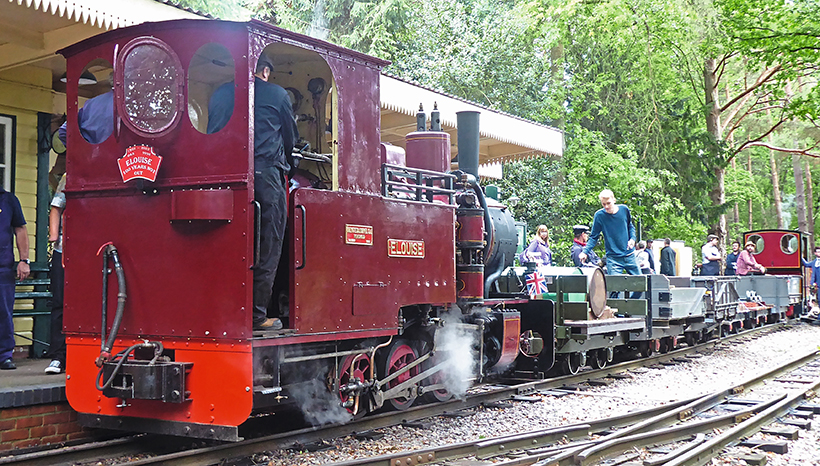
Orenstein & Koppel of Berlin 0-6-0 well tank loco made in 1922, Eloise is the mainstay of the Old Kiln Railway’s locomotive fleet. (Pic: David Vaughan)
The line has a varied stock of passenger coaches including a replica Glynn Valley Tramway coach. It also has a selection of goods wagons reflecting various industrial uses such as slate and brick wagons. A train of these was in use on the line giving visitors a glimpse of a past industrial age.
Do go along and enjoy the delights of the railway and museum. In the absence of any brown road signs, use of a sat-nav or a good road atlas would help in finding it!
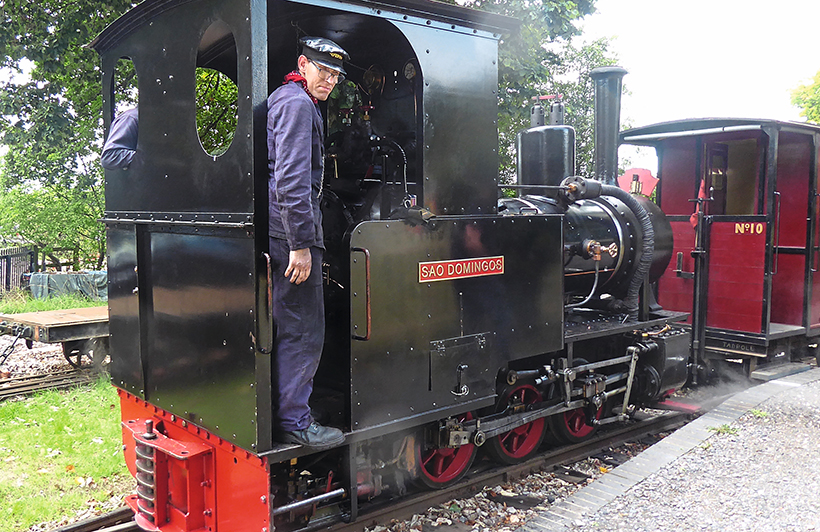
Sao Domingos, another Orenstein & Koppel engine that was new in 1928, via the manufacturer’s Madrid dealership and used at a coal mine in Portugal. The engine was on loan from the Great Bush Railway at Hadlow Down. (Pic: David Vaughan)
This feature comes from the latest issue of Old Glory, and you can get a money-saving subscription to this magazine simply by clicking HERE

Previous Post
Amazingly original 1951 Morris Cowley van

Next Post
Fantastically original 1956 Land Rover Station Wagon



